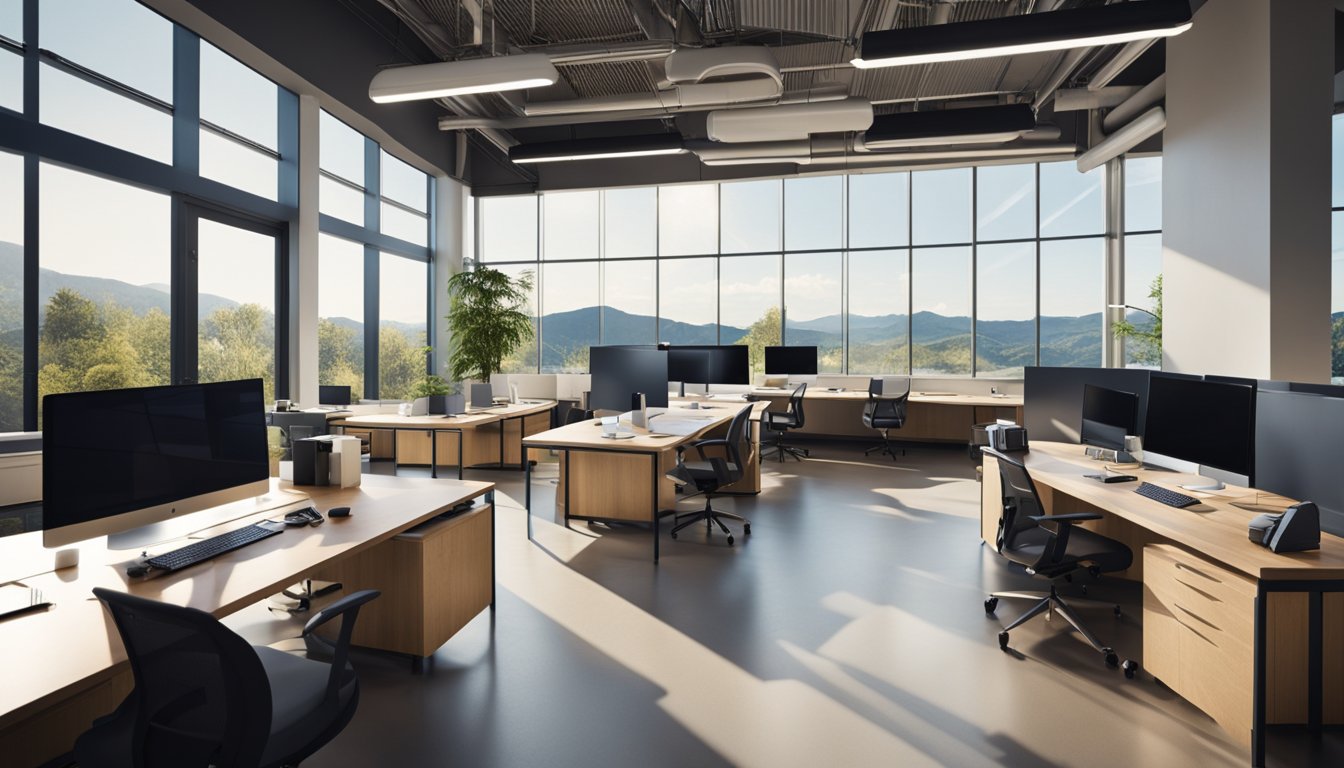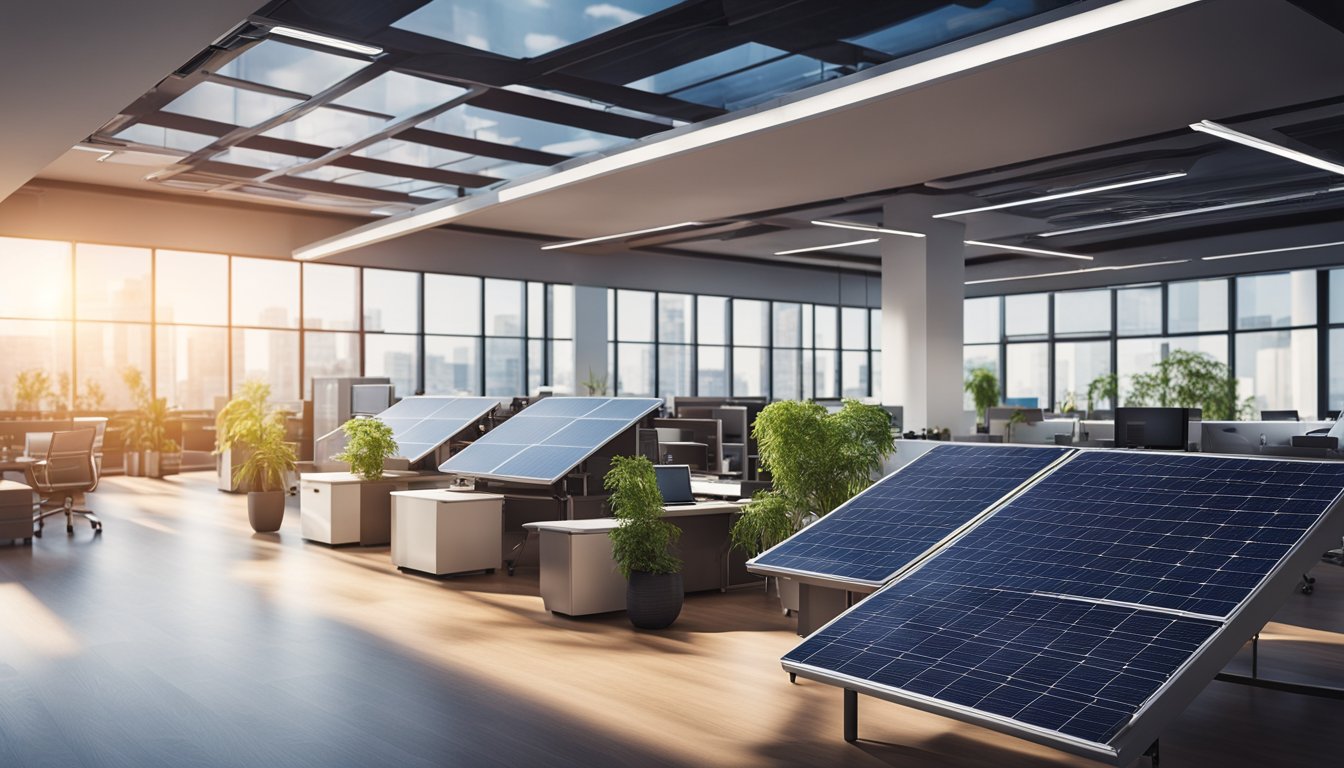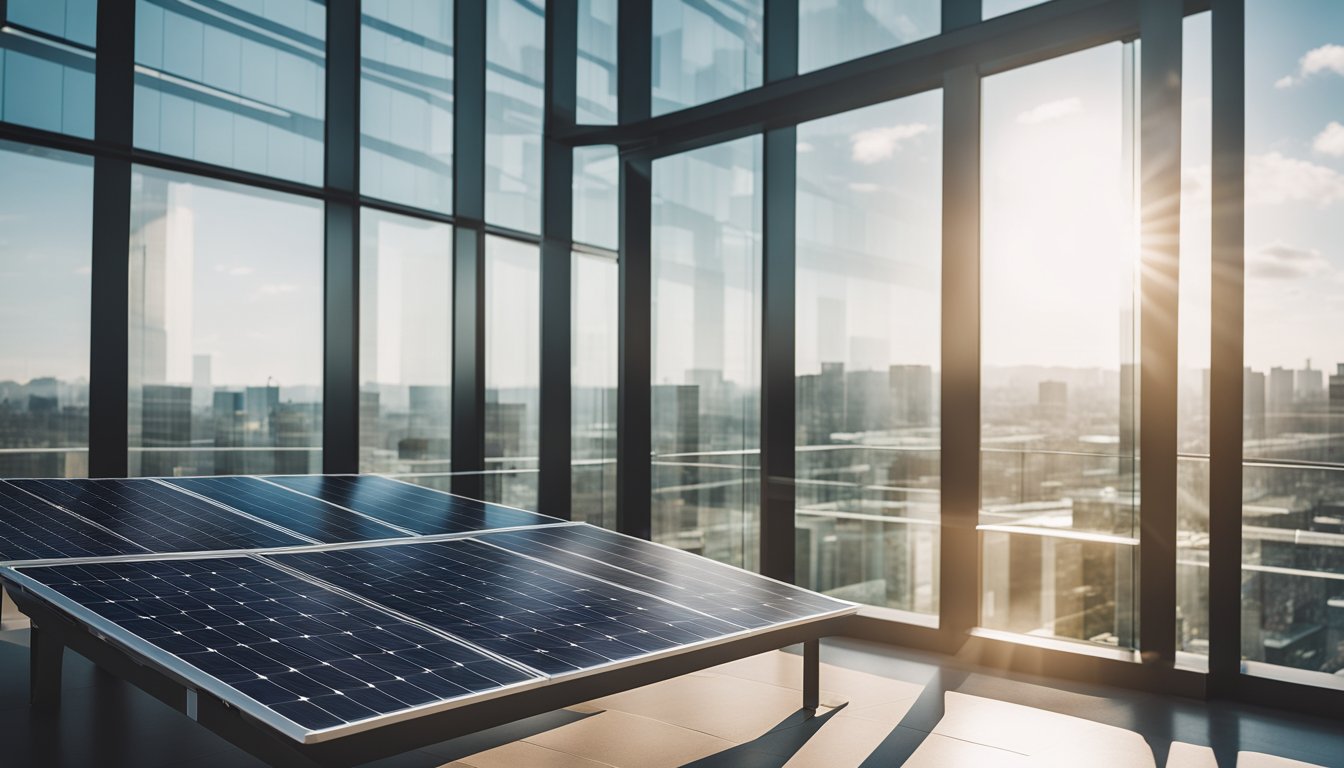Late updated: 17 Aug 2024 09:08
Written by: Amber Collins
Sustainable Office Heating Solutions: Effective and Eco-Friendly Options
Sustainable office heating solutions aren't just an environmental necessity; they are also beneficial for reducing operational costs. From energy-efficient HVAC systems to programmable thermostats, there are multiple innovative ways to minimise our carbon footprint while ensuring a comfortable work environment. By integrating renewable energy sources and adopting modern heating technologies, our offices can become greener and more sustainable.

Proper insulation and radiant heating systems play crucial roles in maintaining energy efficiency. These solutions not only reduce energy consumption but also enhance the overall comfort of our office spaces. We can opt for biomass heating and heat recovery ventilation to further augment our efforts toward sustainability. Incorporating these methods reflects our commitment to creating a more eco-friendly office.
Sustainability isn't solely about high-tech solutions; operational strategies like using programmable thermostats and energy-efficient boilers can significantly impact our energy conservation efforts. As we embark on the journey towards creating greener workspaces, these practices will not just save costs but also contribute to a healthier environment for all of us.
Key Takeaways
- Innovative heating technologies can minimise our office's carbon footprint.
- Proper insulation and radiant heating enhance energy efficiency.
- Operational strategies like programmable thermostats promote sustainability.
Exploring Sustainable Heating Technologies

In the quest for sustainable office heating solutions, we must focus on integrating advanced technologies that minimise carbon emissions and enhance energy efficiency. Key areas include the implementation of heat pumps, solar energy, biomass systems, and innovative design principles.
Heat Pumps and Renewable Energy Integration
Heat pumps play a pivotal role in reducing the carbon footprint of office heating. Ground source heat pumps utilise the stable underground temperature to provide heating in a cost-effective and eco-friendly manner. These systems can be highly efficient, often delivering several units of heat for each unit of electricity consumed.
Similarly, air source heat pumps extract heat from the outside air. They are easier to install compared to ground source variants and are particularly suitable for retrofitting older buildings. When combined with renewable energy sources, such as wind or solar power, these systems can further reduce the dependency on fossil fuels.
Solar Energy Solutions and Biomass Systems
Solar panels are an excellent renewable heating option for offices. Passive solar designs can be used to capture and utilise natural light, reducing the need for artificial heating. Active solar systems involve solar panels generating electricity to power heating systems, thus lowering energy costs and carbon emissions.
Biomass boilers offer another viable solution, burning organic materials such as wood pellets or agricultural waste to produce heat. These systems are renewable and can be more sustainable than traditional heating methods, especially when sourced from certified sustainable forestry practices. However, it is crucial to consider local building regulations and air quality standards when implementing biomass systems.
Innovative Insulation and Building Design
Proper insulation is critical to achieving energy-efficient and sustainable heating. Wall insulation, particularly in older buildings, can significantly reduce heat loss and improve thermal comfort. New builds must comply with stringent building regulations regarding insulation and energy systems.
Innovative building designs also play an essential role. Incorporating features such as double-glazed windows, thermal mass materials, and programmable thermostats can help maintain a stable indoor temperature with minimal energy consumption. Furthermore, integrating natural light through skylights or large windows can reduce the need for additional heating, making these practices a cornerstone of eco heating in office environments.
Operational Strategies for Energy Conservation

Incorporating energy-efficient practices into office heating systems can lead to substantial cost savings and a positive impact on the environment. Below, we outline key strategies involving smart controls and regular maintenance that can significantly enhance energy conservation.
Thermostats, Sensors and Smart Controls
Utilising programmable thermostats and smart controls can optimise heating schedules based on occupancy. These devices adjust temperatures automatically, ensuring energy is not wasted on heating unoccupied spaces.
Thermostats can be set to lower temperatures during non-working hours and gradually warm up the office before arrival times. Smart sensors detect real-time occupancy, enabling more precise temperature control. This not only ensures a comfortable working environment but also maximises energy savings.
Combined Heat and Power (CHP) systems can also be integrated with smart controls, further boosting efficiency by generating both heat and electricity on-site. By leveraging such advanced technologies, we can maintain thermal comfort while adhering to eco-friendly practices.
Maintenance, Cost-Savings, and Eco-Friendly Initiatives
Regular maintenance of HVAC systems is crucial for sustaining energy efficiency and prolonging equipment life. Scheduled inspections and prompt repairs prevent breakdowns and maintain optimal performance.
Routine tasks should include cleaning or replacing filters, checking system controls, and inspecting air ducts. Implementing eco-friendly heating solutions, such as high-efficiency boilers or heat pumps, can further reduce energy consumption.
Taking advantage of incentives and grants available for green upgrades can offset the initial costs. By prioritising maintenance and adopting sustainable practices, businesses can achieve significant cost savings while contributing positively to the environment.
Employing these operational strategies can create a more efficient and sustainable heating solution for office buildings.
Frequently Asked Questions
In our efforts to implement sustainable office heating solutions, we often address various inquiries regarding their effectiveness, costs, and environmental benefits. Below, we provide clarity on common concerns about eco-friendly heating options for commercial properties.
What are the most effective eco-friendly heating options for commercial properties?
Several eco-friendly heating solutions are particularly effective for commercial properties. Insulation and energy-efficient HVAC systems top the list as they significantly reduce energy consumption. Programmable thermostats and radiant heating systems also contribute to creating a sustainable work environment.
How does geothermal heating provide a sustainable climate control solution in an office environment?
Geothermal heating leverages the Earth's stable underground temperature to efficiently heat and cool office spaces. This system reduces reliance on fossil fuels and minimises carbon emissions. As a renewable energy source, it offers long-term sustainability and cost savings for commercial properties.
What are the advantages of using heat pumps for heating office spaces?
Heat pumps are highly efficient and can provide both heating and cooling. They transfer heat rather than generating it, making them more energy-efficient compared to traditional systems. Heat pumps also reduce greenhouse gas emissions and can significantly lower utility bills.
Which green cooling and heating systems are most suitable for corporate buildings?
Corporate buildings benefit from HVAC systems that incorporate renewable resources or various energy-saving measures. Examples include biomass heating, heat recovery ventilation, and underfloor heating. These systems maximise efficiency and minimise waste, making them ideal for large-scale commercial use.
In terms of energy efficiency, which HVAC system stands out for office use?
One of the standout systems for energy efficiency in office settings is the variable refrigerant flow (VRF) system. VRF systems offer precise temperature control and zoned heating and cooling, leading to substantial energy savings. These systems adapt to changing usage levels, making them particularly efficient.
Could you explain the sustainability benefits of GREE HVAC systems in workplaces?
GREE HVAC systems are designed to maximise energy efficiency and reduce environmental impact. They use advanced technology to provide consistent temperature control while consuming less energy. By integrating these systems into workplaces, companies can significantly lower their carbon footprint and promote a greener environment.
